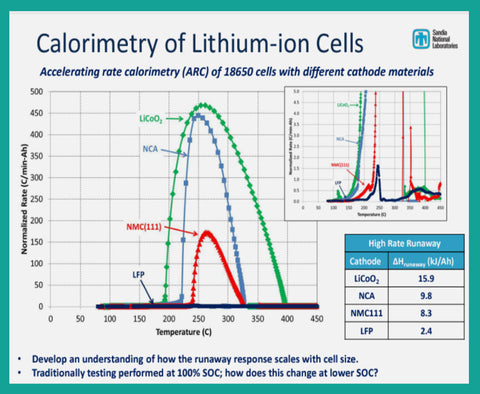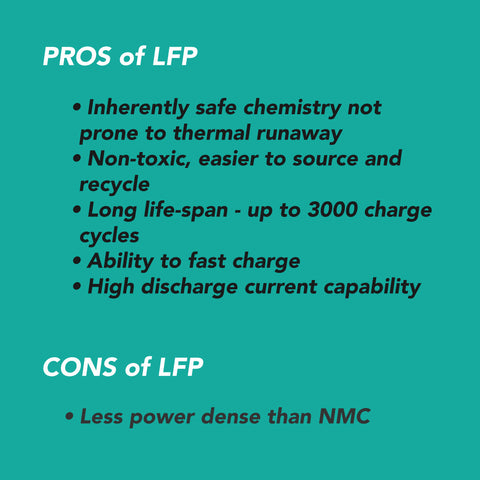
Swifty's LFP Battery - Redefining Electric Scooter Safety
Have you ever wondered why there's been a surge in electric bike and electric scooter fires in the news lately? Well, electric scooter safety all boils down to chemistry!
Naturally, e-bike and e-scooter manufacturers like their vehicles to be equipped with batteries that tick all the boxes: low cost, lightweight, small pack size, and long-range capabilities. Typically, manufacturers turn to NMC cells, boasting high energy density, as their go-to choice, for the long-range and compact size of NMC.
But hold on a second, what about safety? Are NMC cells the safest option out there? Unfortunately, they're not. They can be quite hazardous if mishandled or abused.
So, as the demand for more efficient, compact, and long-lasting batteries grows, it's essential to consider not just performance, but also safety. And that's where LFP batteries step in to revolutionise the game.
Stay tuned as we delve deeper into the world of LFP batteries and uncover why they might just be the safer, more ethical and all-round smarter choice for powering our micromobility revolution.
What is an LFP Battery?
An LFP battery, short for Lithium Ferro Phosphate, is a type of lithium-ion rechargeable battery. LFP battery cells have cathodes made of the Lithium compound Lithium Ferro Phosphate (LiFePO4 or Lithium Iron Phosphate).

LFP is one chemistry that is part of the lithium-ion battery family. Lithium-ion batteries are commonly used in rechargeable consumer electronics, but often we don’t know the differences in chemistry when we make a purchase. Other types of Lithium-ion include NMC (Nickel Manganese Cobalt Oxide), LCO (Cobalt Oxide), LMO (Manganese Oxide) and NCA (Nickel Cobalt Aluminium). Each type has a slightly different performance rating, advantages and disadvantages.
Read More in the Journal: Safest Electric Scooter on the Planet? Swifty GO
For example, NMC batteries are commonly used in e-bikes and e-scooters and some EVs. LCO batteries are commonly used in small personal electronics like phones, laptops and cameras. LMO batteries are commonly used small devices such as power tools. NCA batteries are popular in the electric vehicle market.
LFP was identified in 1996 at the University of Texas at Austin. The Lithium Ferro Phosphate material was hailed to be an
“Excellent candidate for the low power, rechargeable lithium battery, that is inexpensive, nontoxic and environmentally benign.”
Are Battery Fires a Thing of the Past with LFP?
The secret lies in the chemistry! LFP is extremely stable because its inherently resistant to thermal runaway.
Thermal runaway is the term which describes the uncontrollable self-heating of a battery which can lead to a fire that is extremely violent and difficult to extinguish.
However, LFP is not at all prone to thermal runaway and this is due to two important features when compared to the more common NMC li-ion (Nickel Manganese Cobalt).

Graph cited from research paper “Total Stored Energy and its Impact on Thermal Runaway” Sandia National Laboratories 2016
First of all, the electrolyte in an NMC cell is flammable even in its normal state. In an abuse situation any release of the electrolyte will naturally burn. When NMC burns, it produces flammable material and oxygen as products of decomposition. So once on fire, the fire is self-feeding even if deprived of atmospheric oxygen. This is why NMC li-ion is prone to thermal runaway.
Within an LFP battery cell, the electrolyte is a non-flammable solution and is not flammable in abuse situations. LFP does not produce oxygen when heated, which means LFP does not suffer thermal runaway.
This does not mean LFP cannot burn when heated, but it won't produce the self-propogating rapidly-increasing burning that we see in NMC.
LFP is still part of the lithium-ion battery family, but the unique chemistry of Lithium Ferro Phosphate means LFP is considerably better for fire safety.
What are the common causes of battery fires?
The common causes of battery fires involve mishandling or abusing the battery, which leads to uncontrollable heating, or, thermal runaway.
- Using an incompatible charger leading to overcharging
- Low quality charger that does not adhere to safety standards
- A fault in the BMS (battery management system) leading to overcharging
- Physical damage to a battery cell or pack
In the event of an ‘abuse situation’ a battery can start to overheat, produce a build up of toxic gases, and in some circumstances can lead to an explosion.
All batteries must be handled with care and strictly charged using the provided compatible charger from the manufacturer. However, there is one type of lithium battery that is not prone to causing fires, and that is LFP.
Why are LFP batteries good for electric scooters?
LFP batteries are ideal for electric scooters because they are better for fire safety and for consumer peace of mind.
Battery fires from scooters and bikes create shock stories in the press which suppresses demand, and has led to e-scooters being banned on public transport in many regions.
Battery concerns are one of the key inhibitors of the future green transport economy.
The nature of micromobility vehicles is that they are transportable. You take them inside your home and workplace. You charge them at home in the hallway, in the basement, in the kitchen. Consumers need to understand and trust the manufacturer has made a safe battery choice for their vehicle.
Recent UK guidelines specifically advise not to charge e-scooters and e-bikes where they might block an emergency exit, this can be a challenge in an apartment for example.
Which electric scooter uses LFP batteries?
The only electric scooter to use LFP is Swifty GO from British electric scooter manufacturer, Swifty Scooters.
DISCOVER THE SWIFTY GO SERIES HERE
Are LFP batteries eco-friendly?
Lithium Ferro Phosphate is a more environmentally friendly battery choice compared to other types of lithium-ion batteries because the materials are more plentiful and easier to source ethically.
LFP batteries are non-toxic and do not contain harmful heavy metals such as cobalt or nickel, which are common in other battery types such as NMC (Nickel Manganese Cobalt).
Cobalt in particular is known to be a problematic industry. In 2023 Amnesty International reported of the Industrial Mining of Cobalt leading to grievous human rights abuses in the Democratic Republic of the Congo, which is where a large cobalt reserve is being mined.
However, LFP batteries are made by the same suppliers of the other chemistries, and are therefore part of the existing battery supply chain. And while we can argue they are a smarter choice, all batteries are made from earths precious resources, they require carbon in their manufacturing and must be respected.

Who discovered LFP batteries?
American Materials Scientist John B Goodenough is credited for discovering LFP batteries in 1996. Goodenough then went on to be awarded the Nobel Prize for Chemistry in 2019 because of his discoveries in Lithium Batteries.
The first Lithium Ferro Phosphate battery research paper was published in the Journal of the Electrochemical Society in 1997. The paper was entitled “Phospho-olivines as Positive-Electrode Materials for Rechargeable Lithium Batteries” by A. K. Padhi, K. S. Nanjundaswamy and J. B. Goodenough at the Center for Materials Science and Engineering, The University of Texas at Austin, USA.

Final Thoughts
So there you have it! A short chemistry lesson shows that LFP is the smartest choice for micromobility!
At Swifty, we are on a mission to set a new standard in electric scooter safety, and with LFP, we are able to do just that. With safety, sustainability, and innovation at our core, we can addresses your battery concerns head on. Say hello to a brighter, safer future with The Swifty GO Series!




Hello here need more information on electric scooter if do mouthy payment plan
Deborah Talbot on
How to buy?
Viktor Blazevski on
Terrific article!
Have you considered an LFP battery for the SwiftyONE? Is it even feasible?
Thanks!
David on